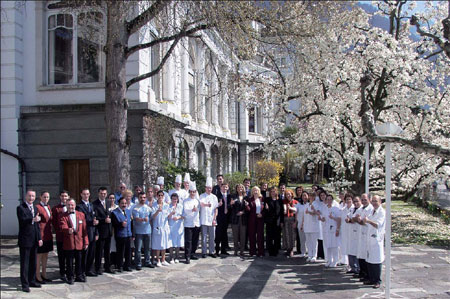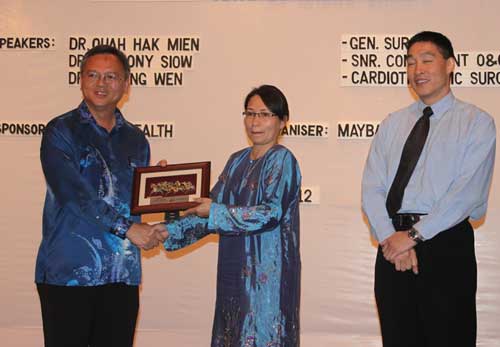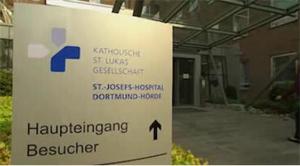Clinique Biotonus Bon Port in Switzerland is attracting Chinese clients who want anti-aging treatment. Provided to China Daily
More and more affluent Chinese are heading overseas in search of a wide variety of treatments
Twice a month Li Aobo, a private trip consultant, flies 12 hours in each direction to accompany a few clients from Beijing to the Clinique Biotonus Bon Port in Switzerland, which treated former South African president Nelson Mandela in 1992.
“My clients sit in the business-class or first-class cabins while I always get an economy ticket and have to get ready to take orders at any time,” says Li.
Li works for Lavion, a Beijing-based travel agent focusing on private medical tourism. The growth of the company’s membership, which went from zero to more than 1,000 in fewer than five years, is demonstrative of the business opportunity in the sector.
While China is emerging as a hot destination among medical tourists for its affordable prices and its fusion of modern medical practices with traditional Chinese therapeutic techniques, increasing numbers of affluent Chinese are traveling abroad for better medical procedures, regardless of their price.
In China, nearly 60,000 people go abroad annually for healthcare services, especially for anti-aging therapy, cancer screening, to give birth and to get treatment for chronic diseases, said Yang Jian, CEO of the Shanghai Medical Tourism Products and Promotion Platform, in a China Daily report from November 2011.
The figure was just several thousand in 2006, he said.
Bearing in mind China’s huge population and rising middle class, the outbound medical-tourism market seems a good bet for companies such as Lavion.
“We have been working with Lavion for six years. We started with about 50 patients in the first year and now have more than 200 patients every year,” says Dr Reza Tavassoli at Clinique Biotonus Bon Port, who was also Nelson Mandela’s chief doctor.
In the future, he says the clinic hopes to receive as many as 500 Chinese clients each year as he sees more Chinese people paying attention to longevity and anti-aging treatments.
On his latest trip to Switzerland, Li Aobo’s clients were three women real estate entrepreneurs around 40 years of age. They were mainly going to the clinic to receive treatment for intensive fatigue, burnout and problems linked to age.
After the therapy, Li took them to Lucerne, Geneva and Zurich to help with his customers’ needs for shopping and sightseeing.
“Some of our clients are not used to Western-style food, especially during the therapy. I often make porridge with a rice cooker and prepare some simple Chinese dishes,” says Li.
“Each time, we bring six people at most to the center on the shore of Lake Geneva to ensure the quality of our customized service. I am not only a medical translator, but also a private butler who is in charge of all the details of their daily life during the seven-day trip.”
The lowest price for such a trip is 200,000 yuan ($31,500, 25,000 euros). Some clients ask for private jets for the journey, which can be arranged for about an additional 1.5 million yuan, says Zhou Kaiwen, founder of Lavion.
With more than 10 years of experience in the incentive and business-travel department of China International Travel Service, a leading Chinese travel enterprise, Zhou has plenty of exposure to high-end tourism.
“When we were consistently receiving upmarket overseas clients, I was wondering whether Chinese people have sophisticated needs in outbound travel,” says Zhou.
When he founded Lavion in 2006, Zhou did not rush into doing business. He hired a consulting company for market research, which selected 3,000 high-income customers to answer a questionnaire.
Upon discovering that their top concern was health, Zhou decided to make healthcare tourism the focus of his business to differentiate it from competitors.
“Although we spent much money and energy in the first year, it seems to be worth it. In 2007, we had about 100 members and began to make money, and our turnover has a growth rate of 30 percent every year,” he says.
Apart from the trips to Switzerland, other travel programs include diabetes and chiropractic-treatment tourism to Germany, major-disease screening in Japan, and beauty-treatment trips to South Korea.
“Local hospitals and companies are not familiar with the Chinese market, and we are playing the role of an agent for them,” Zhou says.
“But about 70 percent of our customers choose Europe as their destination as they have more trust in the superior healthcare there.”
Most of his clients are successful entrepreneurs in their early 40s. In the beginning, women accounted for 60 percent of his clients, but as men are also paying attention to their health, the proportion has become almost equal. Zhou also mentions that returning customers account for 40 percent of his clientele.
“Anti-aging, insomnia, depression and face-lifting are long-term rehabilitation projects, one trip cannot solve the problem once and for all,” he says.
Other medical-tourism agents have since joined the market, including Pure Blue International, which is working with four clinics in Switzerland; LuckTour Medical Tourism, providing tourism to Japan and Singapore; and Rigii, which is cooperating with Swiss medical institution Centre de Sante Helvetique S.A.
“More rich people are willing to pay for outbound medical expenses, not only for health, but also to enjoy the relaxation during the trip,” says Li Yuyang, business director of Ogilvy Health.
He says these people are realizing the importance of health and they are tired of seeing a doctor in traditional hospitals.
However, Li points out that while more companies are rushing into the business, they are providing very similar routes, projects and services.
“I think they have to develop more projects or product portfolios to cater to different needs and also build their own characteristics,” he says.
But Li says expensive medical tourism will be primarily targeted at rich people.
“If it expands into a service that everyone can enjoy, the quality of the service will not be guaranteed,” he says.
When it comes to the increasing number of competitors, Lavion’s Zhou says the market is not mature, but he is confident in his company’s position and reputation in the industry.
“We will stick to high-end and tailor-made services in the future,” he says.
yaojing@chinadaily.com.cn
source: http://www.europe.chinadaily.com.cn / Home> E-Paper/Business / by Yao Jing (China Daily)/ September 07th, 2012




